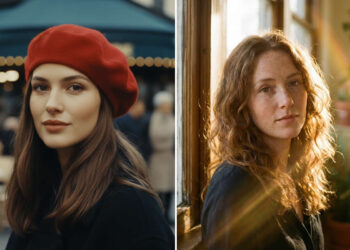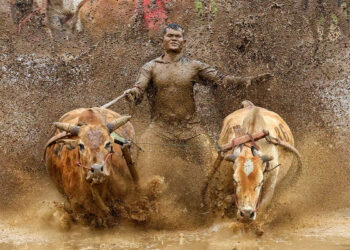Street photography is often praised for its spontaneity, but what truly sets a remarkable photograph apart from a mere snapshot is the mood it conveys. Indian street photographer Vineet Vohra, globally recognized for his poetic and layered images, believes that mood is the silent language of photography—it transforms ordinary moments into stories that speak to the heart.
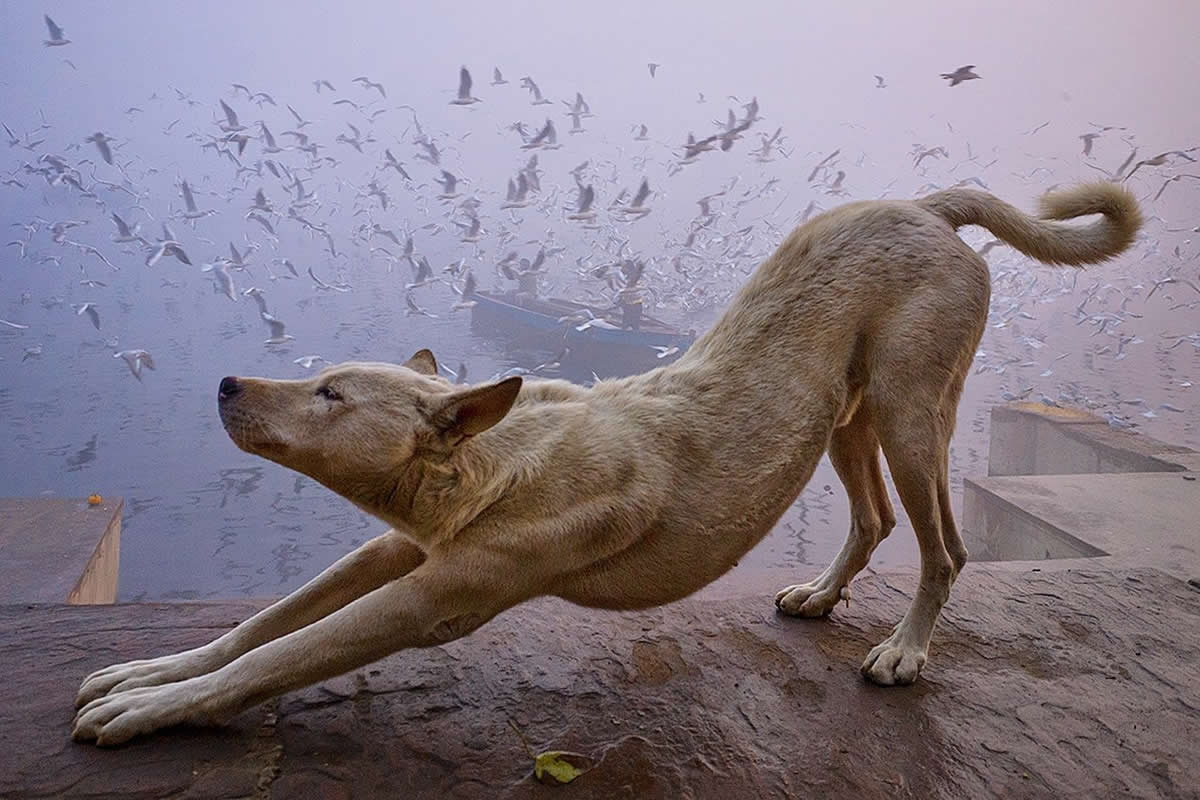
According to Vohra, mood in street photography is not something that can be staged or forced. It emerges from the genuine connection between the photographer, the subject, and the scene. Mood gives emotional weight to fleeting moments—be it a child staring out of a bus window, an old man lost in thought, or a silhouette framed against the afternoon sun.
The presence of mood in a photograph makes viewers pause, reflect, and even relate. It adds a subtle narrative—loneliness, joy, chaos, nostalgia—that lingers long after the image has been viewed. Without mood, even a technically perfect photograph might lack soul. Vohra’s work consistently showcases how emotional context, body language, light, color, and timing all work in harmony to produce photographs that are both visually compelling and emotionally resonant.
In this article, we explore five essential tips from Vineet Vohra on how to elevate your street photography by creating mood and turning ordinary scenes into powerful visual stories.
#1. Observe with Patience Before You Click
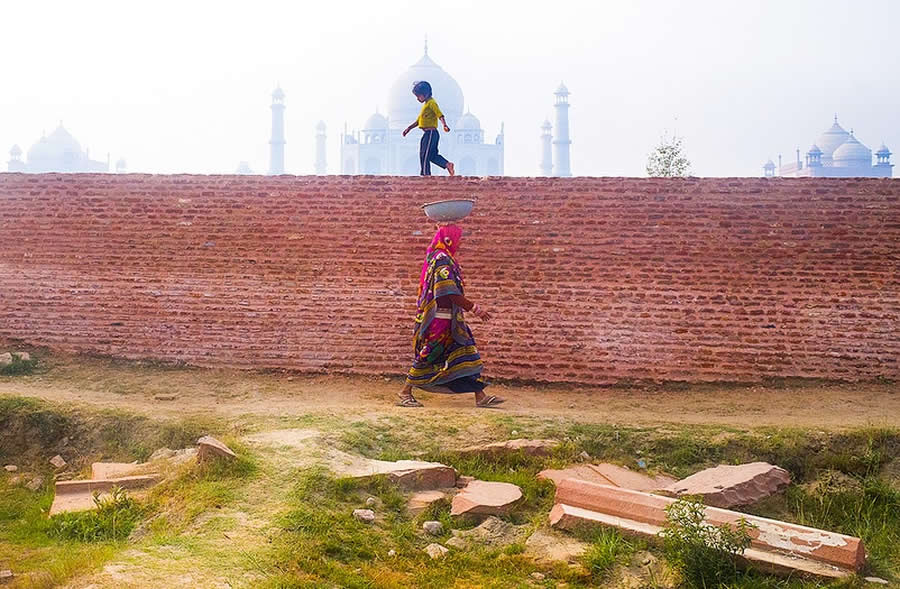
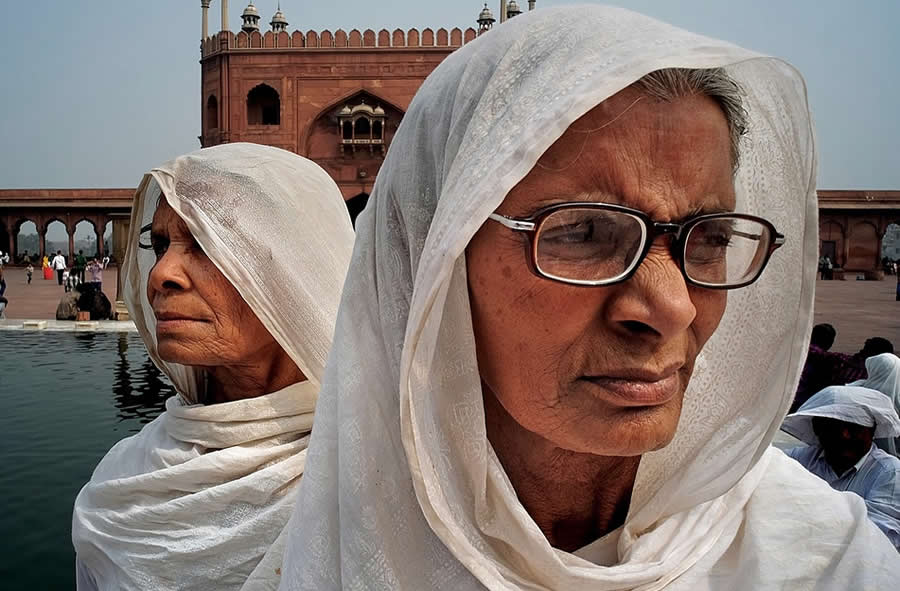
One of the most important lessons Vineet Vohra teaches is the art of observation. For him, creating mood begins long before the shutter is pressed. Instead of chasing action, he recommends letting the scene unfold naturally. Street photography isn’t just about capturing movement—it’s about waiting for that perfect, emotionally charged moment to emerge. This might mean observing the way light falls on a wall, how shadows move with passing people, or how someone’s posture reveals a deeper emotional state.
Vohra emphasizes that mood often hides in subtlety. A fleeting glance, a quiet gesture, or an awkward silence can say more than a dramatic scene. To capture this, the photographer must be present, still, and receptive. Patience allows emotions to surface and stories to form.
He suggests returning to familiar locations repeatedly. Over time, the rhythm of a place reveals itself, and the photographer becomes attuned to its hidden stories. It is in this quiet attentiveness that mood reveals itself—and when it does, it becomes possible to freeze it in a frame. Mood doesn’t always shout; sometimes, it whispers. The job of the street photographer is to listen.
#2. Use Light and Shadows to Set the Tone
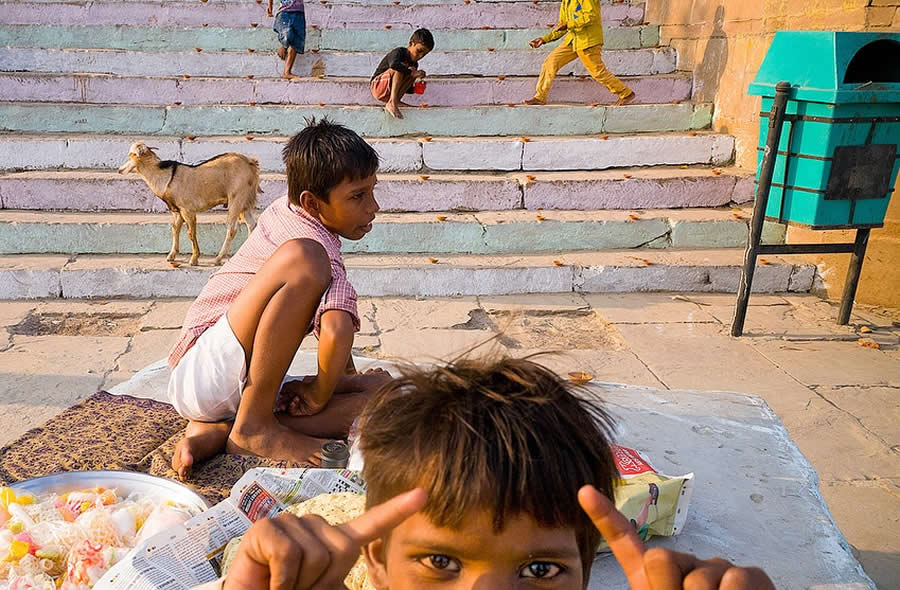
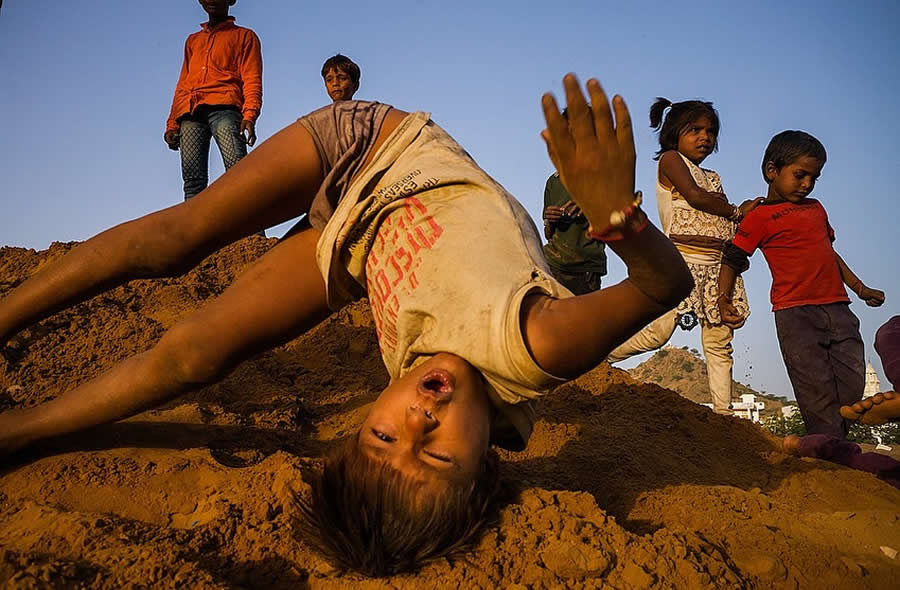
Light is one of the most powerful tools in a street photographer’s arsenal, and for Vineet Vohra, it plays a critical role in shaping mood. Light doesn’t just illuminate a scene—it defines it. The time of day, the direction of the light, and how it interacts with the environment can all dramatically shift the emotional impact of a photograph.
Vohra often uses high contrast lighting, deep shadows, and warm golden-hour tones to convey emotion. Shadows, in particular, act as a narrative device. They can evoke mystery, solitude, or tension—elements that contribute to mood without the need for an overt subject. Silhouettes, harsh lighting angles, and dappled light filtered through trees or windows can add dramatic flair and emotional richness to an image.
But Vohra also warns against using light as a gimmick. The mood must emerge organically from the interplay between light and the story you want to tell. Instead of overexposing or artificially manipulating tones, he advises using natural lighting conditions to enhance what’s already present in the moment. By learning how to read and interpret light, photographers can elevate a candid street moment into something emotionally immersive and visually unforgettable.
#3. Frame for Emotion, Not Just Aesthetics
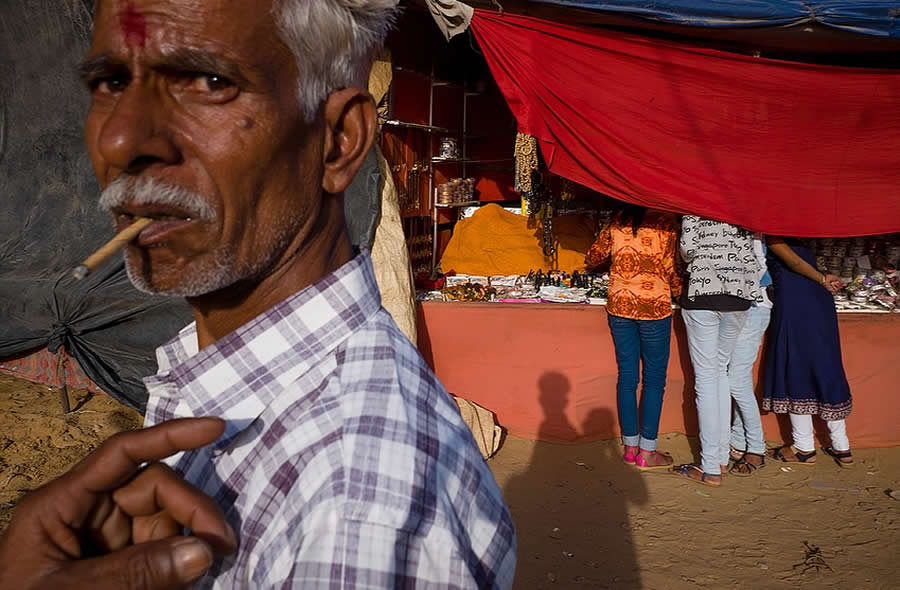
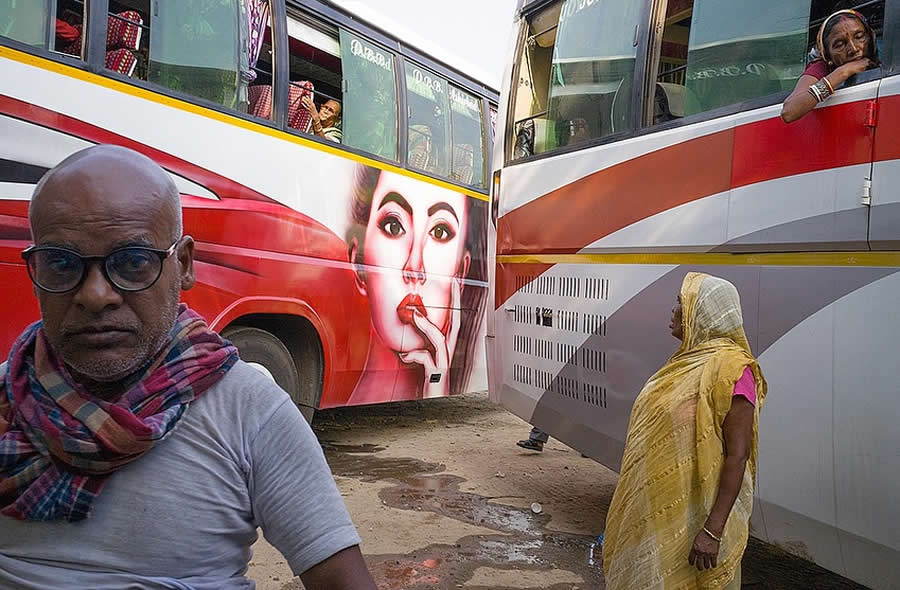
While strong composition is essential, Vineet Vohra insists that emotional content should take priority over aesthetic perfection. A well-balanced frame may catch the eye, but it’s the emotional core that touches the heart. According to Vohra, mood thrives when composition is used as a tool to highlight human emotion, tension, or connection within a scene.
He encourages photographers to go beyond the rule of thirds and golden ratios, and instead ask: What does this moment feel like? Are the subjects isolated or interacting? Is there tension between elements? Does the frame convey stillness or chaos? These are the questions that guide Vohra’s approach to mood-based composition.
Vohra also plays with layering, reflections, and framing within the frame to subtly emphasize emotional undertones. For instance, shooting through a car window can evoke a sense of separation, while using mirrors might introduce themes of identity or introspection. Strategic positioning of elements within the frame can either emphasize connection or highlight alienation.
Ultimately, the mood of a photograph is not just about what is in the frame, but how it is framed. When composition aligns with the emotional pulse of the moment, the result is a story that the viewer not only sees—but feels.
#4. Embrace Imperfection and the Unpredictable

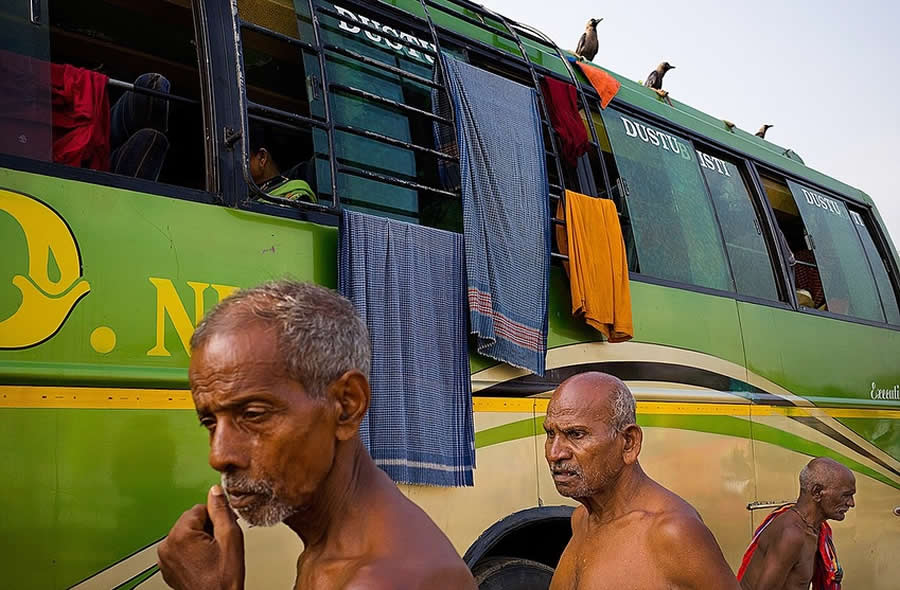
Street photography, by its very nature, is unpredictable. People move, light shifts, and scenes change in an instant. Instead of resisting this chaos, Vineet Vohra embraces it—believing that mood often arises from imperfection. A slightly blurred figure, an awkward gesture, or an off-center subject can sometimes reveal more about human experience than a technically flawless shot.
Vohra encourages photographers to surrender control and let intuition take over. Street scenes are dynamic, and trying to force a composition can result in images that feel lifeless or staged. By welcoming accidents, unexpected juxtapositions, and visual tension, a photographer can tap into the raw, unfiltered emotion that gives a photo its mood.
He also highlights the importance of not deleting imperfect shots too quickly. What might seem like a mistake at first glance—a light leak, a grainy texture, or a background distraction—could actually add emotional complexity or narrative depth. In this way, imperfection becomes a powerful storytelling tool.
For Vohra, street photography isn’t about control—it’s about conversation. By allowing the street to speak in its own unpredictable language, photographers can uncover emotional truths hidden within the noise, and transform imperfections into poetry.
#5. Connect with the Soul of the Scene
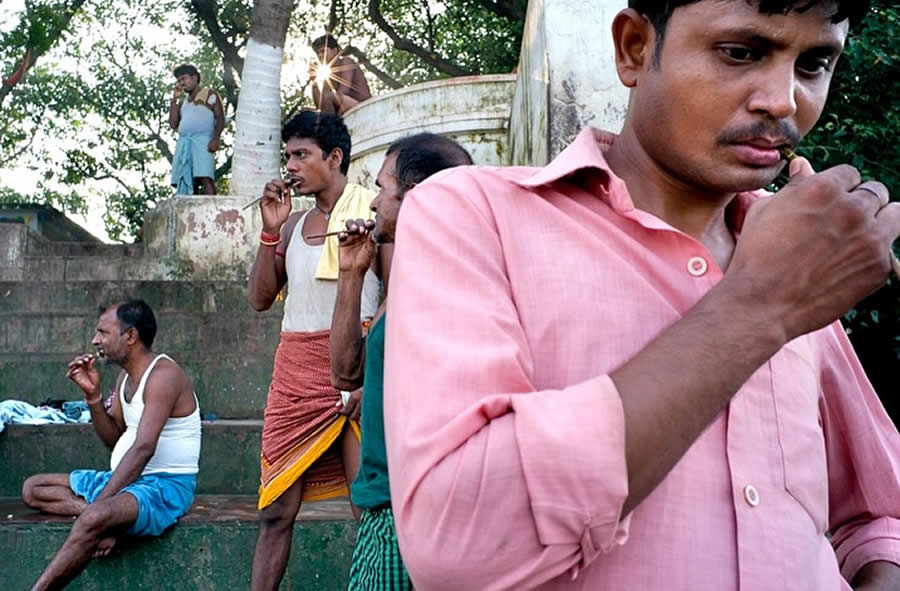
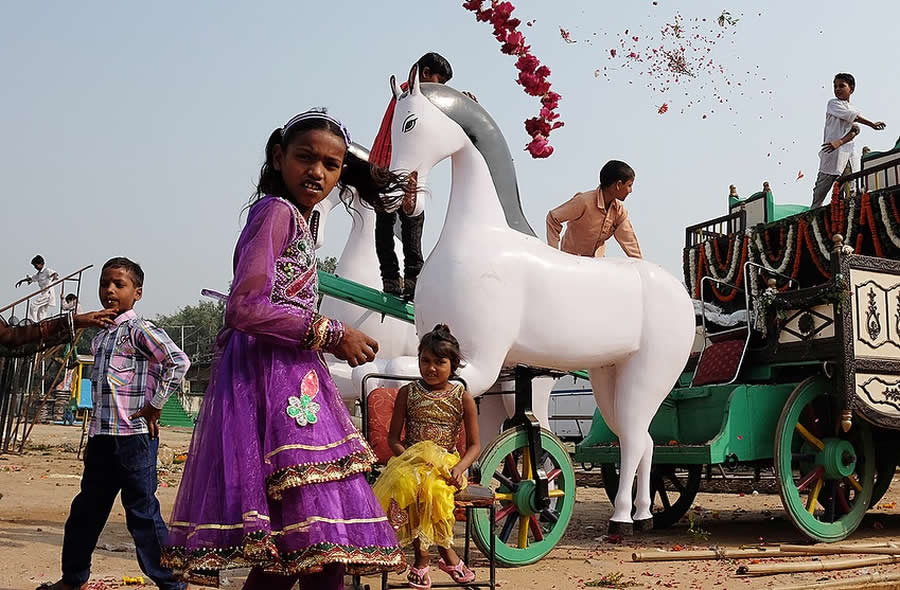
Perhaps the most intangible yet essential aspect of mood, according to Vineet Vohra, is the photographer’s emotional connection to the scene. To create photographs that carry emotional weight, the photographer must first feel something themselves. It’s not about capturing what’s happening—it’s about resonating with it.
Vohra suggests cultivating empathy as a photographic skill. Observing people not as subjects, but as fellow humans experiencing joy, sorrow, fatigue, or solitude helps build deeper awareness. This emotional attunement is what allows a photographer to anticipate mood and recognize those subtle gestures or expressions that carry narrative power.
He often speaks of “shooting with the heart,” meaning that the emotional intent behind the camera must align with what is being captured. Whether it’s the melancholy of an abandoned alley or the quiet humor of daily street life, connecting with the soul of the scene allows the mood to flow naturally into the image.
Vohra believes that viewers can sense authenticity. If the photographer is emotionally present, the photograph becomes more than a document—it becomes a shared experience. By connecting with the soul of the street, the image becomes a mirror reflecting not just what was seen, but what was felt.
About Vineet Vohra
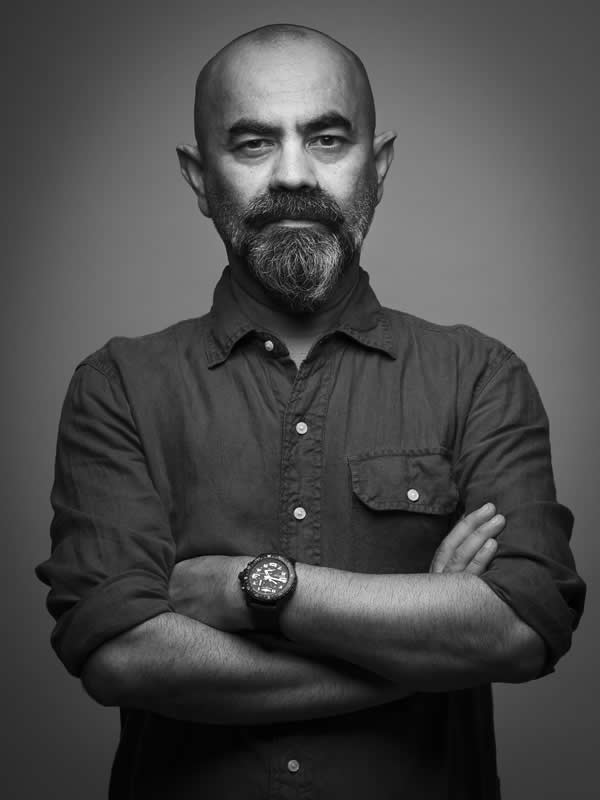
Born on 2nd November, 1973, in New Delhi/India with a first class degree fine arts from the prestigious College of Arts, Vineet’s a self-taught photographer and street photography is a passion that he lives like a discipline. He started shooting as a wild life photographer for two years and switched on to street in 2001, it instantly became his passion and his first nature.
For him, street photography is a journey and he travels everyday, he’s learning and unlearning everyday and thrive to improve everyday. Life in general, which is so unexpected, he try to be as honest through his lens as he can. About Street Photography, Vineet said " I try to synthesize between human elements and the environment & my main focus is how to make ordinary moments look extraordinary. I think everyone of us should get involved with photography, because it gives more than one can ever imagine."
He’s a Leica Ambassador, first ever Indian in the history of Leica, and conducting workshops as a Leica ambassador in Leica Akademie, with various publications on Leica blog. Before Leica he was an official Fuji X photographer, member of APF Collective & The Street Collective. He is currently doing workshops globally, including Miami street photography festival, Italian street photography festival, London street photography festival and India photo festival. He’s also in the leading judging panel of all these festivals. He has been awarded thrice in a row at the Xposure photo festival. He also giving lectures and conducting workshops in leading colleges of India for past 15 years.

